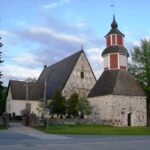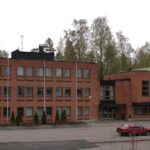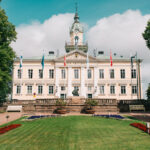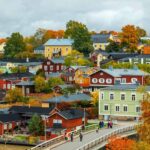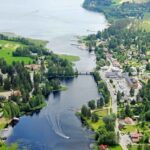City of Turku is a beautiful coastal city located in the southwestern part of the country, at the mouth of the Aura River, with a population of approximately 175,000. Thanks to the port located in this city, Finland’s trade with other countries has become more accessible.
The exact founding year of Turku is not clear, but it is said to have been established by the Swedes in 1157 and is the oldest city in Finland. This city has been the seat of the Archbishop and hosts a university. Until the early 19th century, Turku was one of Finland’s cultural and economic centers. Shipbuilding has always played a crucial role in Turku since it has a winter harbor, and a portion of the country’s economy relies on this harbor.
Turku is a popular destination for hikers, fishermen, and cyclists. Turku’s geographical location makes it an excellent starting point for exploring the surrounding region and the Åland Islands. Turku offers a relatively wide range of apartments and wooden cabins that are more affordable compared to the capital city, making it a preferred holiday destination for many.
Turku – The Oldest City in Finland
Even though the current capital of Finland is Helsinki and this city is considered a great destination for immigrants, Turku offers a highly creative and fresh atmosphere. When you step into Turku, you immediately sense a high quality of life. This city is the oldest in Finland and was considered the main capital of the country in the past. Turku’s nature and its strong university make it an excellent choice for living.
History of the City of Turku
The city of Turku was born in the 13th century at the point where the Aura River flows into the sea. Many believe that the city’s history began with a letter in which Pope Gregory IX permitted the transfer of the archbishop’s seat to what is known today as Turku. Turku was the largest city in Finland and one of the most important medieval cities of the entire Swedish realm. The name Turku is derived from “tǔrgǔ,” an ancient Russian word meaning “marketplace.”
Thanks to good transportation connections, many people, especially merchants, moved to Turku. The city gradually became larger and wealthier. In those days, the city center was around the Turku Cathedral. Most of the houses and buildings are made of wood, which led to numerous fires. Turku Castle, located near the city, was one of the most important secular fortresses in Finnish history. Despite the protection provided by the castle, the city was ultimately the main stage for many conflicts during the Middle Ages.
Importance of Turku as the Gateway to the East for the Swedish Empire in the 17th Century led to the establishment of several schools and administrative institutions. For example, in 1617, the Turku Court of Appeal was established, and the first court of appeal in Finland, Turun hovioikeus, was held in 1623. In 1640, the Queen of Sweden ordered the establishment of the Royal Academy of Turku, which was the first university in Finland, in Turku. In the years 1808-1809, Sweden and Russia fought a war, and as a result, Finland was ceded to Russia. Thus, the Emperor of Russia became the ruler of Finland, and the Finns acquired Russian citizenship.
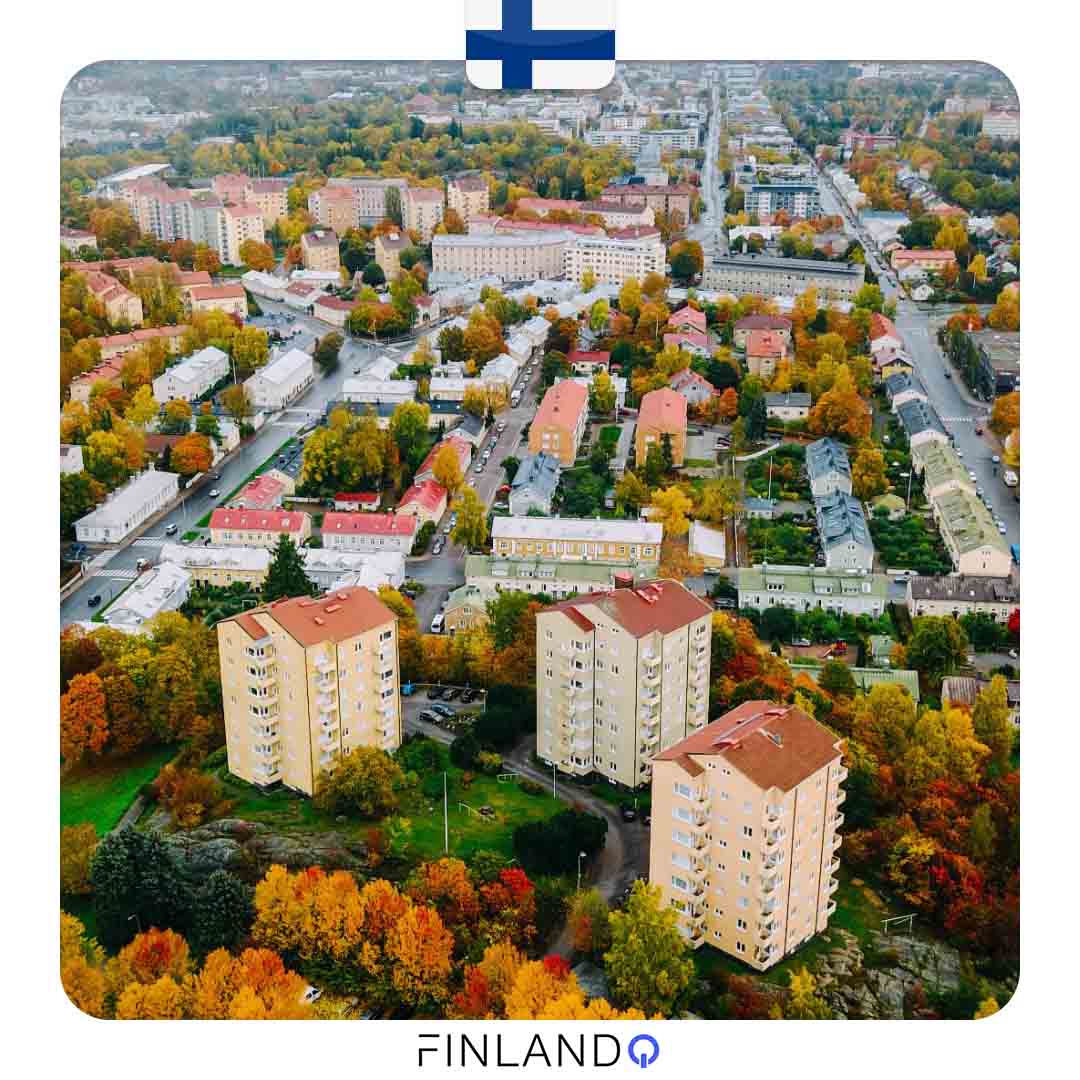
In 1809, Turku became autonomous as the capital of Finland, and the central government was located in the city. Due to its historical position, many important offices were previously located in Turku; however, the capital was moved to Helsinki in 1812 because Emperor Alexander I felt that Turku was too close to the former mother country.
Apart from the Archbishop’s seat, other central government institutions and the Royal Academy of Turku were relocated after a major fire in 1827. Following this significant fire, which was the most catastrophic fire in history, the city’s plan was presented by architect Carl Ludvig Engel. At that time, around 1 million people lived in Finland, with 12,000 residing in Turku. Turku was the largest city in Finland until 1840 when it became slightly different in population due to the relocation of the capital.
Entering Turku, Finland via the Sea
Turku itself is not on the sea but is surrounded by various islands. There is a port near Turku, which, along with Kotka, is the second largest port in Finland. These ports provide access to various destinations, and that’s why they are significant. For example, the Silja and Viking Line ferries bring you from Stockholm to Turku, and you can enjoy the grandeur of the sea on your way. Larger islands near Turku, such as Ruissalo and Hirvensalo, have a small population who prefer to live in serene and beautiful islands instead of the bustling cities.
Arriving in Turku, Finland by Train
If you arrive by train in this beautiful city, the best place to start your walking tour in Turku is the southwestern side of the railway station, in the Port Arthur district. This area presents you with 19th-century wooden houses next to the river, cozy cafés, creative shops, and fine restaurants. In the summer, the residents of Turku prefer to spend their free time on the shores of the Aura River. Sometimes special events are held along this river, such as the July Food Festival, where diverse booths showcase their culinary skills and lead a lively and vibrant festival.
Turku Market Hall – the Heart of the City
Turku Market Hall has been the heart of the city for over 100 years. It’s one of the places you shouldn’t miss visiting, especially the Eerikinkatu area. Designed by architect Gustaf Nyström and opened in 1896, this building captivates any viewer with its unique architecture. In Turku, there is a bustling market that is a delightful experience. Around forty stalls offer you various local and traditional Finnish dishes to get acquainted with the country’s cuisine. Turku Market Hall hosts approximately two million visitors annually and remains as beautiful as ever.
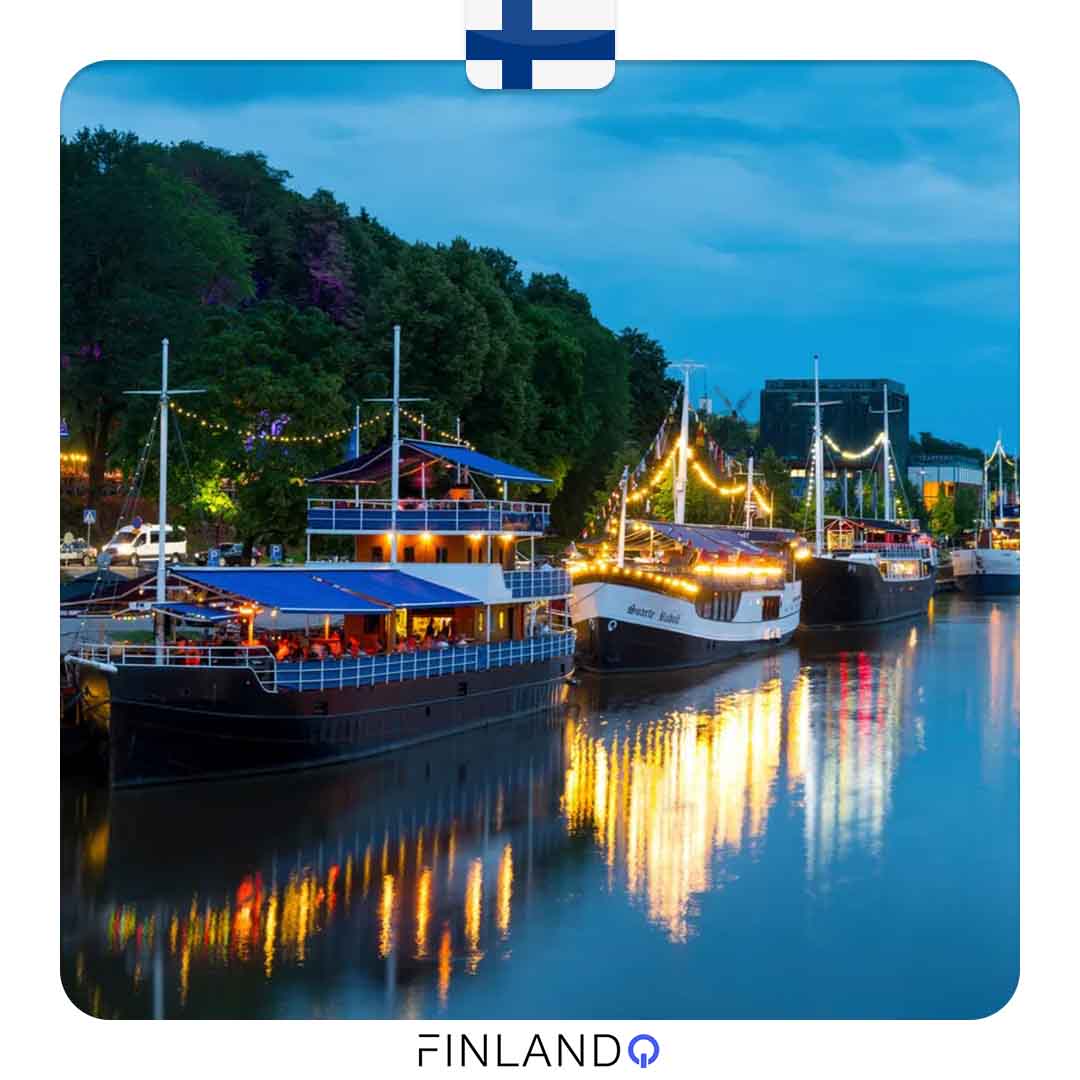
Vibrant Activities by the Aura River
Inject serenity into your soul with a visit to the Aura River. During your walk in Turku, you’ll notice the Cathedral on the horizon, and it will immediately catch your eye with its unique structure. Turku Cathedral is grand, especially when you stand right in front of it. Turku Cathedral is a medieval building and the main church of the Finnish Evangelical Lutheran faith. Its construction began in the late 13th century, making it the oldest surviving building in the main part of Finland. While it has gone through changes and expansions over time, it still preserves its authenticity.
Transportation in Turku
Turku has an efficient public transportation network that connects the city well to other parts of Finland. City buses in Turku operate across various parts of the city, and you can obtain the necessary information at different bus stops before boarding. When traveling on public buses, you can pay your fare in cash or with a travel card (you can purchase the travel card from service points). Traveling from Turku to various regions of Finland, especially the capital region and Helsinki, is easy. Turku also has an airport where domestic and international flights operate, making it more convenient for visitors.
University of Turku in Finland
One of the best universities in Finland is the University of Turku, known for its high academic standards, attracting a large number of international students who choose to continue their education in Turku. This university commenced its operations in 1920 and has hosted over 20,323 students. High-quality programs at the University of Turku include fields like humanities, law, medicine, technology, economics, and more. Most undergraduate programs at this university are offered in Finnish, but higher-level courses are available in English, enabling international students to participate in these educational opportunities.


